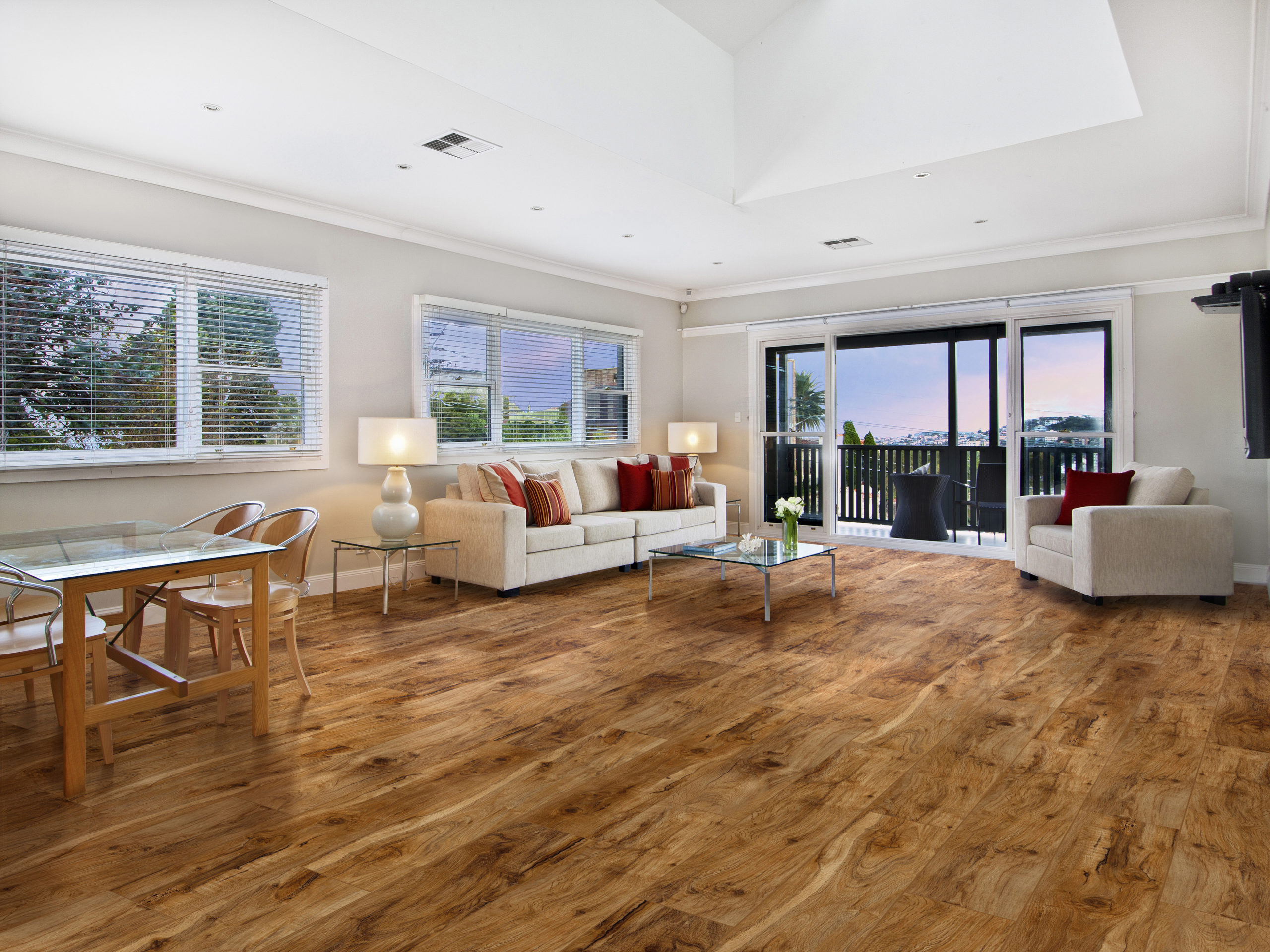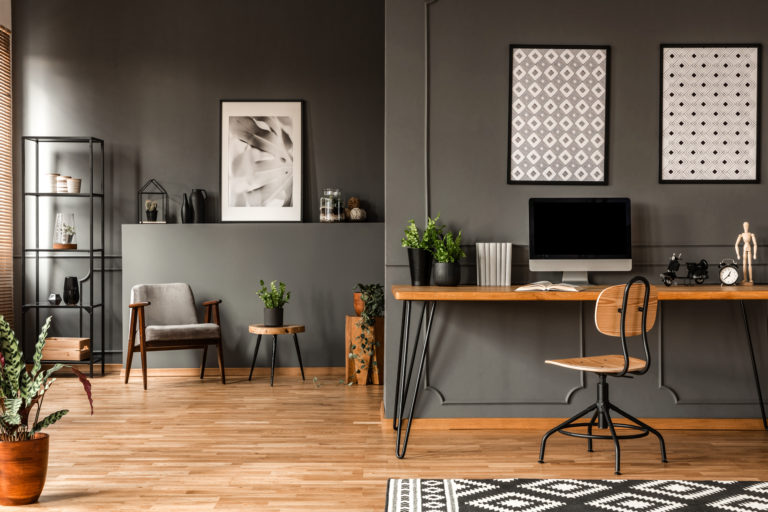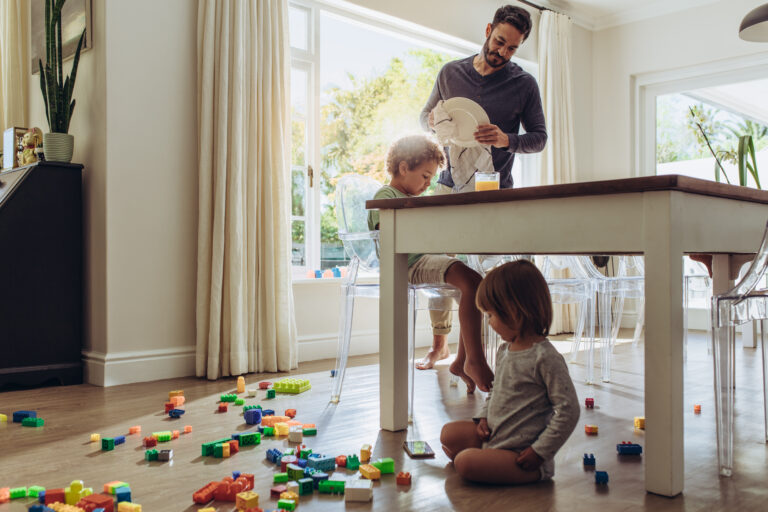When it comes to cleaning luxury vinyl plank (LVP) flooring, it is important to use the right techniques to keep your floors looking their best. From regular cleaning to scrubbing away stains and scuffs, there are several steps you can take to keep your LVP floors shiny and clean. Here is a guide on how to clean LVP flooring.
What is LVP Flooring?
Luxury vinyl plank (LVP) flooring is made up of multiple layers, including a wear layer, a printed vinyl layer, and a core layer, which give it stability and resistance to water and scratches. This type of flooring is a popular choice among homeowners due to its durability, low-maintenance properties, and realistic wood-like appearance.
How to Clean Your LVP Flooring
Although LVP flooring is low maintenance, you still need to clean this floor to maintain its beauty and longevity. To help you get started, here are some methods you need to know to keep your floors looking their best.
Regular Cleaning: Sweeping and Vacuuming
To keep your LVP flooring free of dirt and debris, regular sweeping and vacuuming should be a part of your cleaning routine. Use a soft-bristle broom or a vacuum cleaner with a hard floor setting to prevent any scratching or damage to the floor’s surface. Vacuuming or sweeping daily will ensure small particles don’t build up. Remember to clean under furniture, rugs, and along the edges of the room to remove any hidden dirt.
Best Brands of 2024
Deep Cleaning: Mopping and Scrubbing
A deep cleaning of your luxury vinyl floors should be done at least once a month, depending on the amount of foot traffic your floors receive. For this process, use a damp mop with a gentle floor-cleaning solution specifically designed for vinyl floors. Avoid using excessively wet mops, as standing water can cause damage to the flooring. When scrubbing, use a soft-bristle brush and avoid harsh scrubbers since they can scratch the surface. After mopping, rinse the floor with clean water to remove any residue, and dry the surface with a clean towel or microfiber cloth.
Dealing with Stains, Spills, and Scuffs
LVP flooring is relatively resistant to stains and spills, but it’s crucial to address them immediately to prevent lasting damage. For spills, use a soft cloth or paper towel to blot the area and avoid rubbing, as this can spread the stain. For stubborn stains, use a gentle cleaning solution and a soft-bristle brush, then rinse with clean water and dry the area. To remove scuffs, try using a magic eraser or a solution of baking soda and water and gently scrub the scuffs away.
Expert Tips for Cleaning LVP Floors
As you go about cleaning your LVP floors, here are some expert tips to keep in mind:
- Spot cleaning: Spot cleaning is a fast and easy way to regularly maintain your floors. For small spills or stains, clean the affected area immediately using a soft cloth or sponge dampened with a vinyl floor cleaner. Thoroughly rinse the area with water and dry it with a clean cloth.
- Maintain a consistent cleaning routine: Consistency is key when it comes to maintaining the beauty and durability of your LVP floors. Establish a regular cleaning schedule and stick to it.
- Use doormats: Placing doormats at entrances can help reduce the amount of dirt, debris, and moisture that gets tracked onto your LVP floors.
- Protect from sunlight: Direct sunlight can fade the color of your LVP flooring over time. Use curtains or blinds to minimize exposure to sunlight.
Preventative Measures to Protect Your LVP Floors
Beyond regular cleaning, certain preventative measures can be taken to extend the life of your LVP flooring. Here are some tips to help protect your floors.
Using Protective Pads and Furniture Sliders
Heavy furniture and moving items can cause scratches and dents in your LVP floors. To prevent this damage, use felt pads or rubber caps on the bottom of furniture legs, and when moving furniture, use sliders to reduce friction. These simple steps can help maintain the pristine condition of your LVP flooring.
Managing Pets and Their Messes
Pets can be a significant source of wear and tear on LVP floors. To minimize potential damage, keep pet nails trimmed, clean up pet accidents immediately, and consider placing pet food and water dishes on protective mats. Placing doormats or rugs in high-traffic pet areas can also help protect your floors from scratches and messes.
Monitoring Temperature and Humidity to Maintain LVP Floors
Although LVP floors are more resilient to temperature and humidity changes than traditional wood floors, it’s essential to maintain a consistent environment. Excessively high or low temperatures, as well as humidity levels above 65% or below 30%, can cause the vinyl to expand or contract, leading to potential damage. Invest in a thermostat and dehumidifier to regulate your home’s temperature and humidity levels, ensuring your LVP flooring remains in top condition.
What Should I Avoid Using on My LVP Floors?
Now that you know how to clean your LVP floors and some simple tips to follow for added protection, it’s also important to know what you should never use. To protect your LVP floors, avoid using the following items and substances:
- Steam mops: As mentioned earlier, steam mops can cause damage to LVP floors due to excessive heat and moisture. Use a damp microfiber mop instead.
- Harsh chemicals: Avoid using abrasive cleaners, bleach, ammonia, or petroleum-based products on LVP floors, as they can fade, discolor, or damage the surface. Instead, use a pH-neutral floor cleaner specifically formulated for vinyl floors.
- Wax or polish: LVP flooring often has a built-in protective layer, so waxing or polishing is unnecessary and can leave a sticky residue that attracts dirt. Stick to regular mopping and avoid using wax or polish on your floors.
- Heavy or sharp objects: Dragging or dropping heavy objects on your LVP floor can result in scratches or gouges. Use furniture pads and be cautious when moving heavy items.
- Rubber-backed rugs: Some rubber-backed rugs can cause discoloration of LVP floors. Choose rugs with a natural fiber backing instead.
Following these guidelines will help you avoid common mistakes and ensure that your LVP floors remain in excellent condition for years to come.
Frequently Asked Questions
Can I use a steam mop on LVP floors?
The short answer is no; the use of a steam mop on LVP floors is not recommended. Steam mops use high temperatures and moisture that can cause damage to the adhesive between the planks, leading to warping, distortion, and delamination. LVP flooring is designed to be water-resistant but exposing it to excessive heat and moisture can compromise its structural integrity and void the manufacturer’s warranty. Try a microfiber cloth instead.
How often should I clean my LVP floors?
How often you should clean luxury vinyl plank flooring depends on your lifestyle and the amount of foot traffic in your home. As a general guideline, you should follow the cleaning recommendations provided by the manufacturer of your specific LVP flooring. Remember to regularly sweep, vacuum, or dry mop your flooring at least once a week to remove any debris.
What should you not clean LVP floors with?
Never clean your LVP floors with harsh chemicals, steam mops, or other abrasive products. Additionally, avoid using wax or polish that is supposed to add shine to your floors. These products may leave a film over your flooring that dulls its color over time.
About The Author

Daniel Meeks
April 19, 2023
Daniel Meeks is a flooring expert with over 10 years of experience in the industry. Holding a BS in Marketing from Emerson College, Daniel has spent his professional career writing for some of the biggest names in interior design. In his spare time, Daniel enjoys hiking, baking, and hanging out with his dog, Artie.




